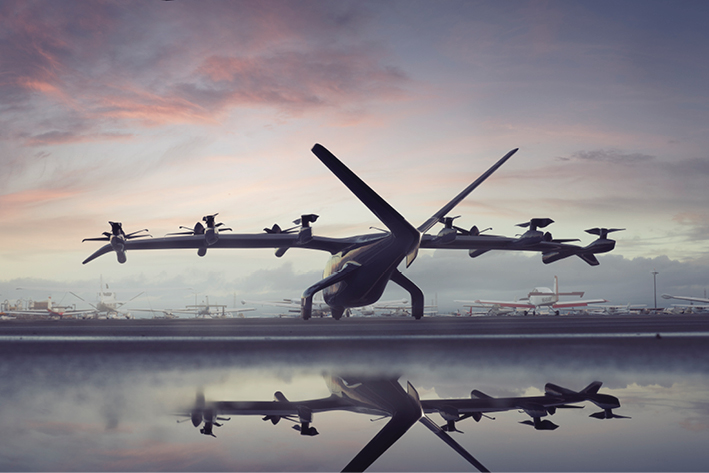If Archer Aviation’s Midnight is something you could envision Batman flying, that’s for a reason. Beyond the sheer weirdness of a 12-propeller aircraft that takes off and lands like a helicopter and flies like a plane, Archer was going for a certain look.
“One of things the company set out to do was to design something that’s exciting and fun to get into,” says Tosha Perkins, Archer’s chief people and partnerships officer. “And I think we’ve accomplished that.”
Among Georgia’s e-mobility projects, Archer’s stands out for its sheer audaciousness. There’s the Midnight itself, a breed you probably haven’t heard of: An electric takeoff and landing aircraft (eVTOL). The vision is bolder still: Aircraft as rideshare. Or as Perkins puts it, “air taxi.”
She spoke with Site Selection from Santa Clara, Archer’s current HQ.
“Say you’re in San Francisco,” she posits. “You could do a date night in Napa. Leave on a Friday evening and get there in 10 minutes.” It’s something you wouldn’t do otherwise, she says. With traffic, the drive could take hours.
“This will really open up a lot of opportunity for folks to kind of do whatever they want,” Perkins believes.
Through an aggressive incentives offer that weighed heavily in Archer’s decision to build the Midnight east of Atlanta, Georgia is betting big on this business plan hatched in California by a company that’s raised more than $1 billion but hasn’t yet turned a profit. Archer has said the package is worth about one-third of the company’s pledged $118 capital investment that’s to create 1,000 incentivized jobs.
In the end, though, it was much more than just incentives that vaulted Georgia’s location — a tract adjacent to a municipal airport in Covington — ahead of a site in Dallas-Fort Worth, the last of many contenders to fall. Being home already to some 800 aerospace companies and a growing EV sector, Georgia was a ripe target.
“Number one,” says Perkins, “was talent pool. We wanted to find a place where there was general talent within aerospace, automotive, electric vehicle and general manufacturing. We understood where the talent pool sat within that.”
The airport location fit nicely, Perkins says, as did Georgia’s generally benign weather, good for testing. And beyond those positives, there was this:
“The piece that was probably less obvious to the public for us was the relationships in Georgia and the willingness to truly help us in every capacity, from training to workforce development, all of the different pieces. Even outside of the incentive package, all the technical colleges and others have kind of come together to provide us the support that we need.”

The Archer facility is to consist of three buildings spread across about 100 acres. The company’s current target is move-in by the end of the year with commercialization of the Midnight in 2025. Until then, through a partnership with a local chapter of of Future Farmers of America, trees cleared from the Archer site are being used to make some of the furniture that will grace the facility.
“It’s what I mean about Georgia going beyond the incentive package,” says Perkins. “Knowing we’re a sustainable company, they offered a lot of connections. They just helped with a lot of these things.”

